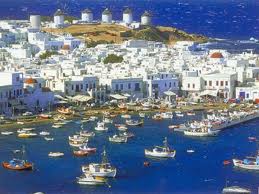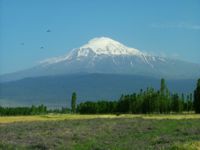Top Attractions in Turkey
St. Sophia Museum
Haghia Sophia Museum, the great masterpiece of Byzantine art. It was built by Justinian in 6th century AD and is the 3rd church to occupy this site.
At the time it was built, it was the largest church in existence. The church was sacked by the Latins during the 4th crusade in 1204 and many of its treasures taken to the west.
When Contantinople (Istanbul) was conquered by the Ottoman Sultan, Mehmet II in 1453, it was converted into a mosque.
Since 1936, by Ataturk’s order it has been a museum.
Blue Mosque
Blue Mosque, Sultan Ahmet Camii is one of the most beautiful mosques in the world. Its name is derived from the blue tiles decorating its interior. Completed in 1616 by Mehmet Aga, Imperial Architect and one of the students of the great architect Sinan.
Its grace and beautiful proportions were intended to reflect the splendour of Islam. It was the supreme Imperial Mosque of the Ottoman Empire. The famous blue and green
Iznik tiles on the walls are bathed in glorious light that is filtered through 260 windows.
 Aspendus
Aspendus
The city was founded on a hilltop and spread down to the plains. Aspendus has one of the best preserved and largest Roman theaters in Turkey. It was built in the 2nd C AD. The city’s aqueducts are also well preserved and worth a visit.
Commagene Kingdom at Mt.Nemrut
One of the most spectacular sites in Turkey especially at sunset. Mt Nemrut (approx. 2552m) is an extension of the Taurus mountain range in southeastern Turkey. After the division of Alexander’s Empire into three, the Seleucids established the relatively small and wealthy Commagene Kingdom in the region.
In 62 BC, Antiochos I became king of Commagene and developed his kingdom as a strategic crossroad on the important trade routes between Syria, Mesopotamia and Rome.
Pamukkale
Pamukkale is one of the natural wonders of the world. It is a unique geological formation formed over 14.000 years. The spring water at Pamukkale has therapeutic qualities and since antiquity has been said to cure rheumatism, kidney and heart diseases.
Hierapolis, means sacred-city and its history goes back 6th C BC. At its peak the population reached about 100,000. The ruins at Hierapolis cover an extensive area.
The theater, Temple of Apollo, Colonnaded Street, Byzantine Gate, Plutonium and Necropolis (Cemetery) are some of the highlights of the city. The Necropolis has approximately 1000 tombs and is the largest in Asia Minor.
Ephesus
Ephesus is one of the best-preserved ancient cities in the world with a history dating back the 12 C BC. It was an important trade and religious center. During the Roman period its population reached approx. 250,000.
One of the seven wonders of the world, Temple of Artemis was in Ephesus. It is also the site of one of the Seven Churches of Revelation.
St. Paul lived and preached for about 2 years in Ephesus.
Cappadocia Region
One of the geological wonders of the world. Cappadocia is a high plateau in Central Turkey at an altitude of 3270 ft / 1000 m. It lies in a triangle formed by the three main towns of Kayseri, Nevsehir and Nigde.
The history of Cappadocia begins 60 million years ago with the eruption of 2 volcanos, covering the area with lava and tufa. In later periods rain and wind eroded the land and created unusual valleys, canyons and cones.
For many centuries Hittites, Assyrian Colonies, Greeks and Romans lived in the region. Cappadocia is also a very important region in early Christian History.
There are over 600 hundred rock-cut churches built by monks and hermits between the 4th and 11th centuries. In some of these, church walls have been decorated with wonderful frescoes depicting scenes from the Bible.
Pergamon
The history of the city starts in the 8th C BC when Aeolian Greek colonies settled in the area. The city was founded on a hill overlooking the Caicos plain. During the reign of Eumenes II in the 2nd C BC, it became one of the cultural and intellectual centers of the day.
With the invention of pergamena (parchment) its library grew to rival in size, the great library of Alexandria. The famous Altar of Zeus was here.
Pergamum was one of the Seven Churches of the Revelations. The famous Roman physician, Galen was born and studied in Pergamum.The
ruins are separated into 3 parts, the Acropolis, Red Courtyard and Asclepion, which was the cure center of Pergamum.
Sardis
Sardis was the capital of the Kingdom of Lydia. It was founded on the banks of the famous golden-bearing river Pactolus. The legendary
King of Lydia Croesus (560-540 BC) controlled most of western Asia Minor and made generous offerings to the temples of Delphi, Artemis and Didyma.
Part of the Gymnasium was converted into a synagogue in 3rd C BC. Sardis is one of the Seven Churches of Revelation.
Gallipoli Anzacs – Canakkale
In 1915, Allied warships tried to force their way through the straits with the intention of opening a supply line to Russia via the Black Sea. Allied landings on the Gallipoli Peninsula were finally beaten off by the Turks following bitter warfare.
Related Articles:
Turkey
Moving to Turkey
Jordan
Egypt
Greece
Spain
Geography of Europe
Geography of Asia
More Articles about Investing in Turkey



















